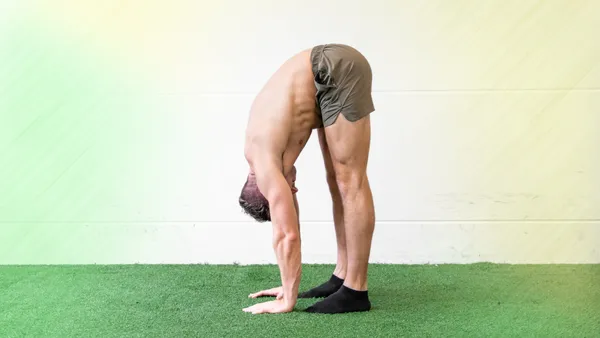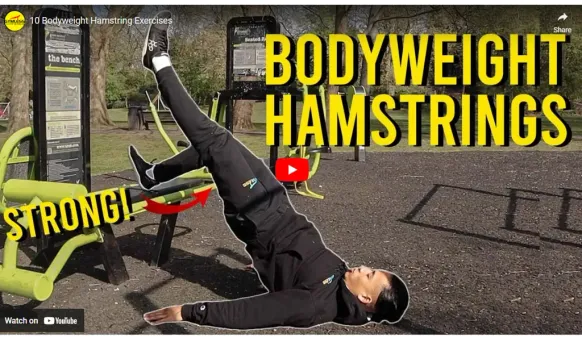Table of Contents
calisthenics hamstrings exercises are a great way to build strength and flexibility in your hamstrings. They can be done anywhere, with no equipment needed, making them a convenient and effective way to improve your fitness. This article will provide you with a comprehensive guide to calisthenics hamstrings exercises, including instructions, benefits, and tips for getting the most out of your workouts. Whether you're a beginner or an experienced athlete, you'll find something in this article to help you improve your calisthenics hamstrings training. So what are you waiting for? Get started today and see the amazing results that calisthenics hamstrings exercises can bring!
Calisthenics Hamstrings: The Ultimate Guide to Building Strong, Flexible Hamstrings
Exercise | Benefits | Tips |
|---|---|---|
Hamstring Curls | - Strengthen hamstrings - Improve flexibility - Reduce risk of injury | - Keep your back straight - Focus on contracting your hamstrings - Don't overextend your knees |
Nordic Hamstring Curls | - Strengthen hamstrings - Improve flexibility - Reduce risk of injury | - Find a partner to assist you - Keep your back straight - Lower yourself slowly and controllably |
Glute Hamstring Raises | - Strengthen hamstrings - Improve flexibility - Reduce risk of injury | - Use a sturdy bench or box - Keep your back straight - Lower yourself slowly and controllably |
Single-Leg Romanian Deadlifts | - Strengthen hamstrings - Improve flexibility - Reduce risk of injury | - Keep your back straight - Focus on contracting your hamstrings - Don't overextend your knees |
Hamstring Bridges | - Strengthen hamstrings - Improve flexibility - Reduce risk of injury | - Lie on your back with your knees bent - Lift your hips up until your body forms a straight line from your shoulders to your knees - Hold the position for a few seconds and then lower yourself back down |
I. Calisthenics Exercises for Strengthening Hamstrings
Bodyweight Hamstring Curls
Bodyweight hamstring curls are a great way to strengthen your hamstrings without any equipment. To do this exercise, simply lie on your back with your knees bent and your feet flat on the floor. Then, lift your hips up until your body forms a straight line from your shoulders to your knees. Hold this position for a few seconds and then lower yourself back down. You can make this exercise more challenging by raising your feet off the floor or by adding weight to your hips.
Nordic Hamstring Curls
Nordic hamstring curls are a more advanced exercise that can help you to develop strong and powerful hamstrings. To do this exercise, you will need to find a partner to assist you. Have your partner hold your feet while you kneel on the ground with your hands shoulder-width apart. Then, slowly lower yourself down until your chest touches the ground. Your partner should then help you to return to the starting position. You can make this exercise more challenging by increasing the distance between your feet and your hands.
- How to Do a Muscle Up
- The Best Calisthenics Gifts and Accessories
- The Best Calisthenics Quotes and Motivation
Calisthenics Exercises for Strengthening Hamstrings
II. Benefits of Calisthenics for Hamstring Development
Benefits of Calisthenics for Hamstring Development: Accessibility and Versatility
One of the primary benefits of calisthenics for hamstring development is its accessibility. Calisthenics exercises can be performed anywhere, anytime, without the need for expensive gym memberships or specialized equipment. This makes it an ideal option for individuals who prefer to work out at home, during their travels, or in outdoor settings.
Moreover, calisthenics exercises are highly versatile. They can be modified to suit different fitness levels and goals. For beginners, bodyweight squats and lunges provide an excellent starting point. As you progress, you can incorporate more advanced exercises such as pistol squats and jump squats to challenge your hamstrings further.
Benefits of Calisthenics for Hamstring Development: Compound Movements and Functional Strength
Calisthenics exercises are primarily compound movements, meaning they engage multiple muscle groups simultaneously. This not only maximizes efficiency but also promotes functional strength. Compound movements mimic everyday activities and improve your ability to perform tasks that require coordination and balance.
For example, exercises like squats and lunges not only strengthen your hamstrings but also work your glutes, quadriceps, and core. This integrated approach to fitness enhances overall athleticism and reduces the risk of imbalances or injuries.
Tips for Maximizing Hamstring Engagement in Calisthenics
To maximize hamstring engagement in calisthenics exercises, focus on maintaining proper form and engaging your hamstrings throughout the movement. For instance, when performing bodyweight squats, ensure your knees track over your toes and that you actively push through your heels to extend your hips and knees. Avoid excessive forward lean or rounding of your lower back.
Additionally, incorporate exercises that specifically target the hamstrings, such as Nordic hamstring curls and glute hamstring raises. These exercises place a greater emphasis on the hamstrings, helping to isolate and strengthen them further.
III. Conclusion
In conclusion, calisthenics provides an effective and accessible approach to hamstring development. Its compound movements and functional strength benefits make it an ideal choice for individuals seeking to enhance their overall fitness. By incorporating the exercises and tips discussed above, you can maximize hamstring engagement and reap the numerous benefits calisthenics has to offer.
Benefits of Calisthenics for Hamstring Development
IV. Advanced Calisthenics Exercises for Hamstrings
Weighted Hamstring Curls
Weighted hamstring curls are a great way to add resistance to your hamstring exercises. You can use a weight vest, dumbbells, or a resistance band to add weight. To perform weighted hamstring curls, lie on your back with your knees bent and your feet flat on the floor. Hold the weight in your hands and place it on your thighs. Then, curl your legs up towards your chest, keeping your back flat on the floor. Slowly lower your legs back down to the starting position.
- Related post: How to Do a Muscle Up
- Related post: The Best Calisthenics Gifts and Accessories
Nordic Hamstring Curls
Nordic hamstring curls are a challenging exercise that targets the hamstrings and glutes. To perform Nordic hamstring curls, kneel on the floor with your feet shoulder-width apart. Place your hands on the floor in front of you, shoulder-width apart. Then, slowly lower your body down towards the floor, keeping your legs straight. As you lower yourself, keep your core engaged and your back straight. Once your chest touches the floor, slowly raise yourself back up to the starting position.
Exercise | Benefits | Tips |
|---|---|---|
Weighted Hamstring Curls | - Strengthen hamstrings - Improve flexibility - Reduce risk of injury | - Use a weight vest, dumbbells, or a resistance band to add weight. - Keep your back flat on the floor. - Slowly curl your legs up towards your chest. |
Nordic Hamstring Curls | - Strengthen hamstrings and glutes - Improve flexibility - Reduce risk of injury | - Keep your core engaged and your back straight. - Slowly lower yourself down towards the floor. - Once your chest touches the floor, slowly raise yourself back up to the starting position. |
Glute Hamstring Raises
Glute hamstring raises are another challenging exercise that targets the hamstrings and glutes. To perform glute hamstring raises, lie on your back with your knees bent and your feet flat on the floor. Place your hands on your hips and then lift your hips up towards the ceiling, keeping your back straight. As you lift your hips, squeeze your glutes and hamstrings. Slowly lower your hips back down to the starting position.
- Related post: The Best Calisthenics Quotes and Motivation
- Related post: How to Get Started with Calisthenics as a Beginner
Advanced Calisthenics Exercises for Hamstrings
V. Tips for Maximizing Hamstring Engagement in Calisthenics
When performing calisthenics exercises, it's important to maximize hamstring engagement to effectively target and strengthen these muscles. Here are some tips to help you get the most out of your calisthenics workouts:
- Focus on contracting your hamstrings throughout the exercise.
- Keep your back straight and avoid arching it.
- Control the movement - don't swing or use momentum.
- Squeeze your hamstrings at the peak of each contraction.
Exercise | Tips |
|---|---|
Hamstring Curls | Focus on contracting your hamstrings as you lower your body. Keep your back straight and your core engaged. |
Nordic Hamstring Curls | Find a partner to assist you or use a resistance band. Keep your back straight as you slowly lower yourself. |
Glute Hamstring Raises | Use a sturdy bench or box. Keep your back straight and lower yourself slowly and controllably. |
Tips for Maximizing Hamstring Engagement in Calisthenics
VI. Conclusion
Calisthenics hamstrings exercises are a great way to build strength, flexibility, and power in your hamstrings. They can be done anywhere, with no equipment, and they are a great way to add variety to your workout routine. If you are looking for a challenging and effective way to work your hamstrings, give calisthenics a try. You may be surprised at how quickly you see results.